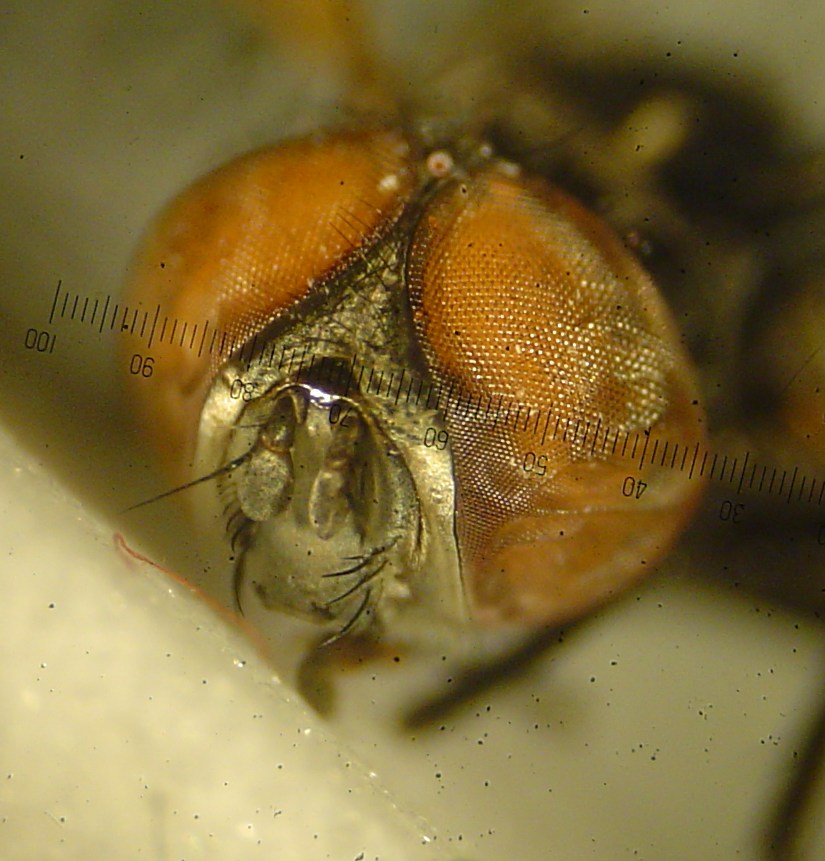Diptera.info :: Identification queries :: Diptera (adults)
Who is here? 1 guest(s)
|
Rhinophoridae - UK => Tachinidae - Phasia obesa
|
|
| Mark-uk |
Posted on 24-07-2010 23:11
|
|
Member Location: UK - Hampshire Posts: 792 Joined: 01.02.10 |
What are the chances of naming this Rhinophorid? Found Hampshire UK, on Heathland. last weekend. 5mm long, 4.5mm ling length. Sorry about the rubbish photos Mark-uk attached the following image:  [138.07Kb] Edited by Mark-uk on 25-07-2010 11:27 |
|
|
|
| Mark-uk |
Posted on 24-07-2010 23:12
|
|
Member Location: UK - Hampshire Posts: 792 Joined: 01.02.10 |
side view
Mark-uk attached the following image:  [80.93Kb] |
|
|
|
| Mark-uk |
Posted on 24-07-2010 23:13
|
|
Member Location: UK - Hampshire Posts: 792 Joined: 01.02.10 |
head
Mark-uk attached the following image:  [134.28Kb] |
|
|
|
| Liekele Sijstermans |
Posted on 24-07-2010 23:15
|
|
Member Location: Geldermalsen Netherlands Posts: 305 Joined: 16.04.05 |
Try Phasia (Tachinidae) Liekele |
|
|
|
| ChrisR |
Posted on 25-07-2010 08:43
|
|
Administrator Location: Reading, England Posts: 7699 Joined: 12.07.04 |
Looks like Phasia obesa to me (obvious dusting & yellow hairs on the gena) 
Manager of the UK Species Inventory in the Angela Marmont Centre for UK Biodiversity at the Natural History Museum, London. |
| Mark-uk |
Posted on 25-07-2010 11:26
|
|
Member Location: UK - Hampshire Posts: 792 Joined: 01.02.10 |
Thanks chaps. That leaves me a little confused - I thought the bend in M1 and the long petiole place whatever would have been a tachiind in the Rhinophoridae? Mark |
|
|
|
| ChrisR |
Posted on 25-07-2010 12:07
|
|
Administrator Location: Reading, England Posts: 7699 Joined: 12.07.04 |
Err ... Tachinidae and Rhinophoridae are 2 separate fly families ... closely related but one isn't a subset of another.  The long petiole is a feature found in some species in both families but it isn't characteristic of either family as a whole - like so many things you have to take into account a combination of other features before you can be sure what you have. Hope that helps but feel free to ask more if you're still confused 
Manager of the UK Species Inventory in the Angela Marmont Centre for UK Biodiversity at the Natural History Museum, London. |
| Mark-uk |
Posted on 25-07-2010 12:52
|
|
Member Location: UK - Hampshire Posts: 792 Joined: 01.02.10 |
Realised 1st point just my Stubbs key to families give little weight to any other features. I need to do more with calyptrates, most I leave in field, Scathophagidae are OK as are Sarcophagidae when I find males. |
|
|
|
| ChrisR |
Posted on 25-07-2010 13:34
|
|
Administrator Location: Reading, England Posts: 7699 Joined: 12.07.04 |
Yeah, sarcos are do-able with a bit of care and easy to spot in the field but rhinophorids will look almost exactly like tachinids until you can check the subscutellum. Then you'll see that rhinos have only got a partial, incomplete subscutellum  At the moment I take many more sarcos than tachinids but I am still getting used to them ... the Sarcophagini all look the same in the field At the moment I take many more sarcos than tachinids but I am still getting used to them ... the Sarcophagini all look the same in the field 
Edited by ChrisR on 25-07-2010 13:35 Manager of the UK Species Inventory in the Angela Marmont Centre for UK Biodiversity at the Natural History Museum, London. |
| Jump to Forum: |














